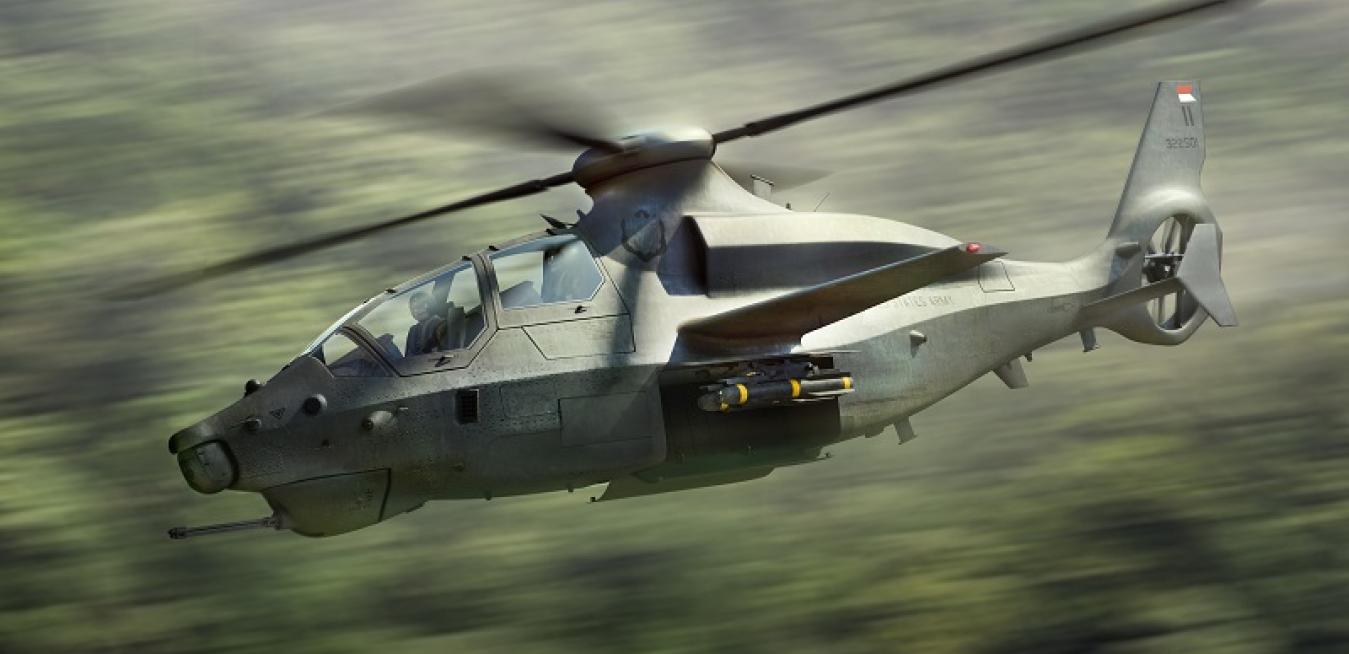It’s too early to say what the next generation of U.S. Army attack and reconnaissance helicopters will look like. But they’ll be powered by GE engines.
In October, Bell revealed its vision of the aircraft: the 360 Invictus, a two-seat, tandem cockpit helicopter that is one of five designs from different manufacturers competing for a contract from the military service for its Future Attack Reconnaissance Aircraft (FARA) program launched in April. FARA is looking for a helicopter that’s high-performing and also agile enough to “hide in radar clutter and the canyons of megacities.” Next year, the Army will select two proposals that will become flyable prototypes.
Bell says the design incorporates proven technologies from both commercial and military programs. The 360 Invictus can fly faster than 185 KTAS knots true air speed (KTAS) — denoting the actual speed of the chopper relative to the air that surrounds it — and maneuver easily at high speeds.
The roster of new designs also includes the Raider X, introduced last month by helicopter maker Sikorsky, a Lockheed Martin company. Sikorsky describes its entry into the competition as “an agile, lethal and survivable compound coaxial helicopter.”
https://www.youtube.com/watch?v=5rrYg4f6tdM&feature=emb_logo
Although Sikorsky’s and Bell’s visions of the ideal military helicopter may differ, they do share one key feature: They both rely on GE Aviation’s T901 engine. The Army selected the 3000-shaft-horsepower T901 for its FARA project earlier this year in yet another competition, called Improved Turbine Engine Program (ITEP).
The T901 taps into some of GE Aviation’s most sophisticated materials and technology. For instance, several of its components are made from ceramic matrix composites (CMCs) — a breakthrough material that’s 20% stronger and two-thirds lighter than its metal counterparts. It also has 3D-printed parts. The technology enabled designers to incorporate more complex shapes than traditional manufacturing can produce. The new engine provides 50% more power and is 25% more fuel-efficient compared with the previous GE military helicopter workhorse, the T700.
The T901’s benefits are not new to the U.S. Army. Back in February, the Army announced it would upgrade the engines in two of its helicopters, the Black Hawk and Apache, to the T901. The workhorse models had relied on the T700 for over four decades. As one maintenance pilot says, “I've been working with these for 17 years and have never had a reliability issue.”
Bell and Sikorsky also have a history of working with GE engines, and both manufacturers look to the T901 to make their aircraft even more powerful. Tim Malia, Sikorsky’s director of Future Vertical Lift Light, says: “As the T901 engine has a power growth curve over time, we’ll be able to directly harness that with our existing aircraft. Upgrade the engine — you just got more speed, you just got more payload.”
Top image credit: Bell. A version of this story originally appeared on GE Aviation’s blog.





